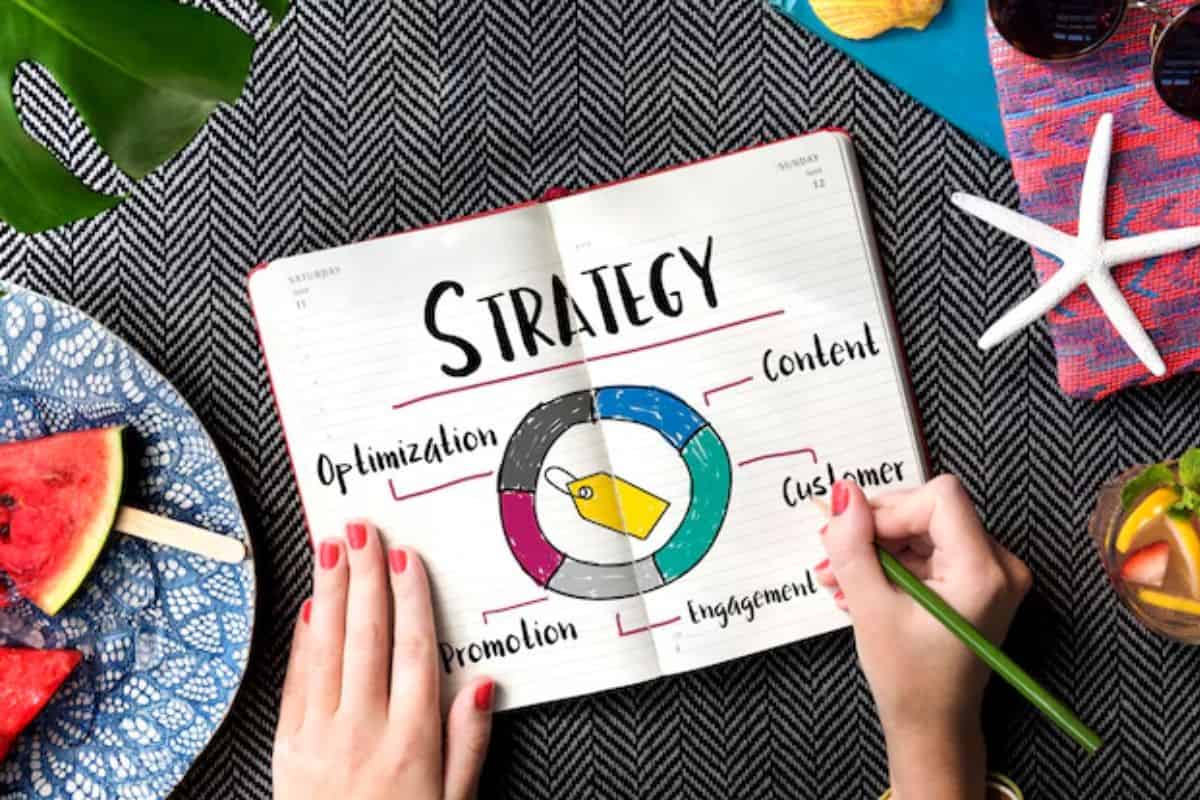You’ve got great products, solid services—but how do you actually get people to notice and care? That’s where strategy comes in.
Marketing isn’t about who shouts the loudest—it’s about who connects the best.
The brands that win are the ones that get their audience, show up in the right places, and offer something people actually want.
When that happens, marketing stops feeling like a sales pitch and starts feeling like a conversation.
The good news? You don’t need a massive budget or a full-time marketing team to make it work.
In this guide, we’re breaking down five proven strategies that drive real business growth—whether you’re just starting out or looking to scale.
What is a Marketing Strategy?
A marketing strategy is your game plan for how you’ll attract, engage, and convert customers.
There’s no single formula that works for everyone. A small coffee shop and a global tech company will take completely different approaches.
The key is understanding your market, setting clear goals, and using the right tactics to reach and engage your audience effectively.


Never Worry About AI Detecting Your Texts Again. Undetectable AI Can Help You:
- Make your AI assisted writing appear human-like.
- Bypass all major AI detection tools with just one click.
- Use AI safely and confidently in school and work.
Key Components of a Marketing Strategy
A strong marketing strategy has a few essential pieces that keep everything aligned and focused.
Here’s what matters most:
- Clear Goals – What are you trying to achieve? More sales, brand awareness, customer retention? Define your success.
- Target Audience – Knowing who you’re speaking to is everything. The better you understand their needs, the easier it is to connect.
- Unique Value Proposition – What makes your brand different? Give people a reason to choose you.
- Business Name Generator: If you’re building your brand from the ground up, our Business Name Generator helps you instantly create unique, brandable names that capture your identity and align with your marketing goals.
- Marketing Channels – Whether it’s social media, SEO, email, or traditional ads, your strategy should focus on the platforms where your audience spends time. QR codes from Scanova can quickly connect offline audiences to your online content.
- Content & Messaging – Every ad, blog post, and campaign should align with your brand voice and resonate with your customers.
- Budget & Resources – A great strategy balances creativity with available resources, ensuring sustainable growth.
- Performance Tracking – Without data, you’re flying blind. Analytics and KPIs help measure what’s working and where to adjust.
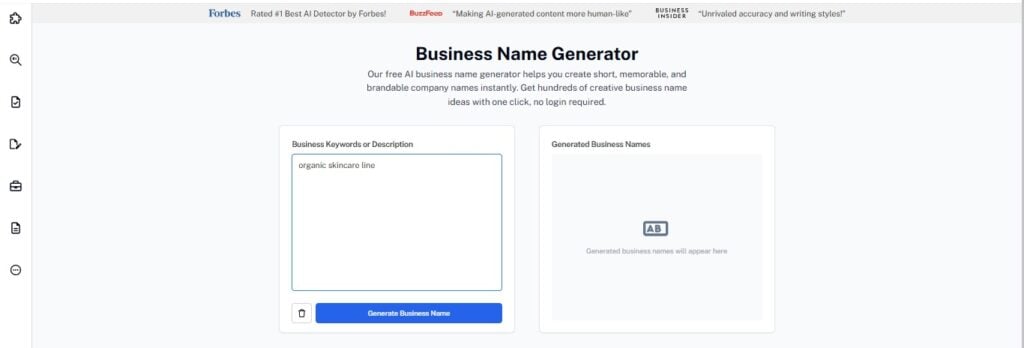
Types of Marketing Strategies: Finding What Works for You
Marketing isn’t a one-size-fits-all game.
Some brands thrive online, while others crush it with old-school methods.
The key is knowing your options and figuring out what clicks with your audience, including leveraging social selling facts and figures to inform how your team uses social platforms for sales and relationship building.
Let’s break it down.
Digital Marketing Strategies: Owning the Online Space
If your audience is scrolling, searching, or shopping online, digital marketing is where you need to be and the right digital marketing services can help you reach and engage them effectively.
It’s all about using the internet to reach the right people at the right time. Some go-to strategies include:
- Content Marketing – Blogs, videos, and social media posts that educate, entertain, and engage.
- SEO (Search Engine Optimization) – Making sure your business shows up when people Google what you offer.
- Email Marketing – Personalized messages that keep customers in the loop and coming back for more.
- Social Media Marketing – Building relationships and brand awareness on platforms like Instagram, LinkedIn, and TikTok.
- Paid Ads (PPC) – Running targeted ads on Google, Facebook, or YouTube with the help of an ad tracker to get instant visibility and measure performance.
- Public Relations Software – Tools that help manage media outreach, monitor brand mentions, and secure coverage from the right outlets—boosting your online reputation and credibility.
Pro Tip: With the rise of AI-generated visuals, tools like AI Image Detector can help verify if an image is real or AI-made—essential for maintaining trust in your content marketing.
Traditional Marketing Strategies: Old-School, Still Effective
Digital gets all the hype, but classic marketing still works—especially for local businesses or brands with a broad audience. Think:
- TV & Radio Ads – Great for reaching a mass audience quickly.
- Billboards & Print Ads – Perfect for brand awareness in specific locations.
- Direct Mail – Flyers, postcards, and catalogs still get attention (especially in a digital world).
- Networking & Sponsorships – Face-to-face connections and community involvement build trust fast.
- Event Marketing – Hosting or participating in local events, trade shows, or community fairs creates direct engagement with potential customers. It’s a great opportunity to design a flyer that highlights your offerings, promotions, or event details and hand it out to boost visibility and drive foot traffic.
Inbound vs. Outbound Strategies: Attraction vs. Outreach
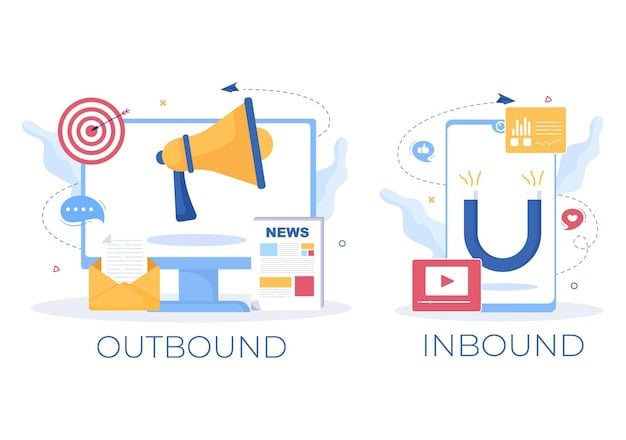
Marketing can either pull customers in or push your message out.
Here’s the difference:
Inbound Marketing (Let Them Come to You)
- Creates valuable content that attracts people naturally.
- Examples: Blogs, SEO, YouTube videos, social media.
- Feels organic and builds trust over time.
Outbound Marketing (You Go to Them)
- Puts your message directly in front of people.
- Examples: Cold emails, paid ads, direct mail.
- Works fast but needs a great hook to stand out.
The best strategies mix both—drawing in interested customers while reaching out to new ones. For example, if YouTube is your go-to channel, then while you build trust organically with valuable content, you can also buy cheap YouTube views from reliable sites to give your videos an initial visibility boost and help them reach a broader audience faster.
Five Key Marketing Strategies That Actually Work
Successful marketing comes down to reaching the right people, in the right place, with the right message.
Instead of chasing every new trend, focus on strategies that have actually been proven to grow businesses.
Here are five that consistently deliver results—no matter your industry or budget.
1. Content Marketing: Build Trust Before Selling Anything
Let’s be real—people don’t want to be bombarded with ads.
They want solutions, insights, and sometimes just a good story.
Content marketing is about creating value first, so when people are ready to buy, they already trust you.
But with the rise of AI-generated content, maintaining that trust means making sure your messaging is not just engaging — but accurate.

That’s where TruthScan comes in.
It’s a content verification tool that scans your AI-assisted writing in real time, flags misinformation or questionable claims, and offers trustworthy alternatives.
For marketers, this means fewer headaches, more confidence, and content that actually supports your brand’s credibility.
How It Works:
- Videos & tutorials → Show, don’t just tell. How-to guides and behind-the-scenes content build credibility.
- Podcasts & newsletters → Keep your brand top-of-mind without constantly selling.
- Case studies & testimonials → Let happy customers do the talking for you.
Quick Win: If you’re using AI-generated content, make sure it sounds human and engaging with AI Humanizer. Because no one wants to read robotic, lifeless text.
Explore our AI Detector and Humanizer using the widget below!
2. Social Media Marketing: Be Where the People Are
Social media isn’t just a place to post and rack up likes—it’s where real connections happen.
The brands that stand out are the ones that engage, listen, and make people feel like part of something bigger. As explained in the Attrock guide, you can execute several effective content ideas to boost social media engagement and build a community around your brand.
What Works Best?
- Short-form video → TikTok, Instagram Reels, and YouTube Shorts are dominating.
- Authentic engagement → Reply to comments, ask questions, and build a community.
- User-generated content (UGC) → Let customers share their experiences instead of doing all the talking yourself.
- Social media wall for events → Use a social media wall to aggregate and display live social posts from your attendees, creating excitement, fostering engagement, and letting participants see themselves as part of the experience.
3. Search Engine Optimization (SEO): Get Found Without Paying for Ads
Google is often the first place people go when they need something—whether it’s a product, a service, or just an answer. If your business isn’t ranking, you’re missing out on free, high-intent traffic.
How to Improve SEO:
- Use the right keywords – Find out what your audience is searching for and include those terms naturally in your content.
- Create high-quality content – Google prioritizes pages that genuinely help users.
- Optimize your website – Fast loading times, mobile-friendly design, and easy navigation make a huge difference.
Pro Tip: Writing SEO-friendly content can be a grind, but our AI SEO Writer takes the heavy lifting off your plate, so you can spend less time worrying about keywords and more time creating content people actually want to read.
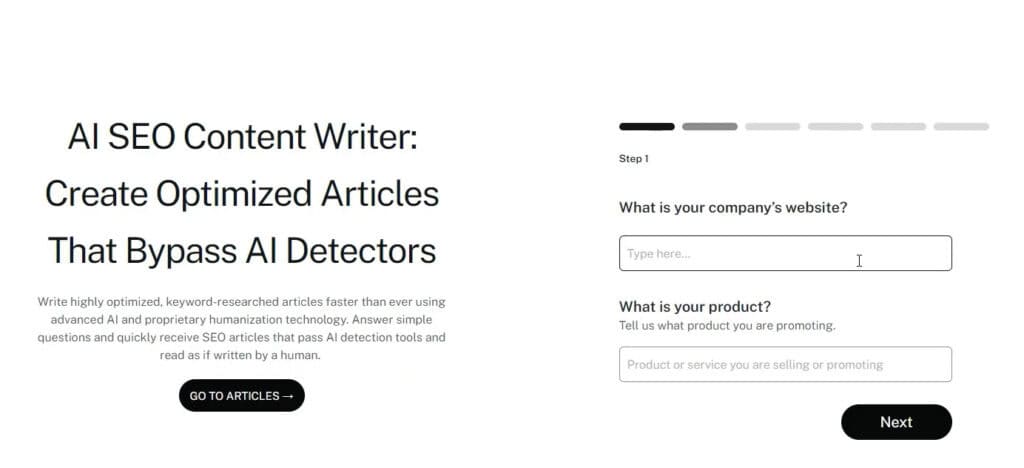
It creates natural-sounding, high-ranking content that Google (and real people) actually love.
4. Email Marketing: Landing in Inboxes (Without Being Annoying)
Email marketing is still one of the highest-converting strategies, when done right.
The key? Make it feel personal, not spammy.
The best emails feel like a message from a friend, not just another sales pitch clogging up an inbox.
What Makes a Great Email?
- A killer subject line – If they don’t open it, nothing else matters. Keep it short, intriguing, and relevant.
- Personalization – Use names, past purchases, or interests to make it feel tailor-made.
- Value first, sell second – Whether it’s tips, exclusive offers, or engaging stories, give them a reason to stay subscribed.
Example: Spotify Wrapped – Every year, Spotify nails email marketing by sending users a personalized breakdown of their most-streamed songs.
It’s interactive, shareable, and keeps people engaged with the brand.
Speed It Up: Need to write engaging emails fast? Try Undetectable AI Chat to generate personalized, high-converting email content in seconds.
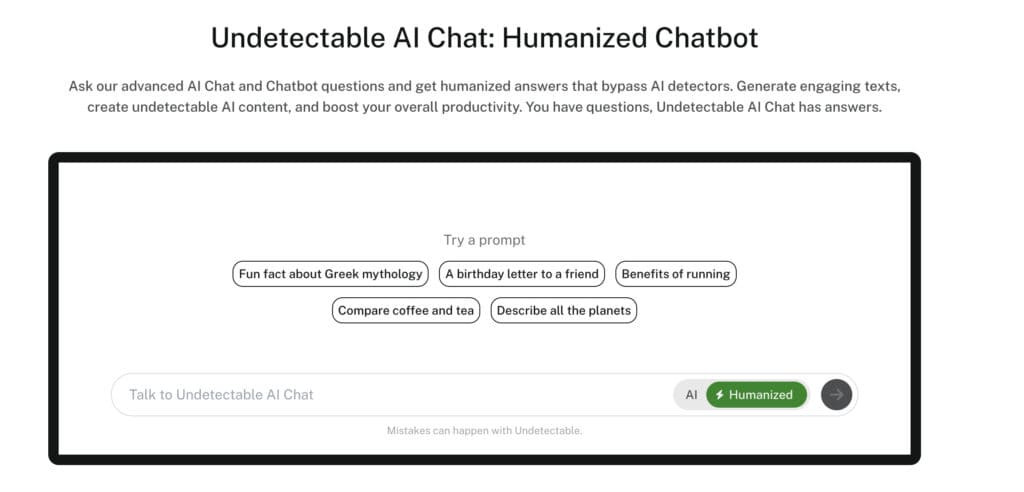
5. Influencer Marketing: Leverage Trust and Reach
People trust people more than brands, which is why influencer marketing is booming.
Whether you work with big-name influencers or micro-creators, the goal is to tap into their audience’s trust and introduce your brand in an authentic way.
Finding the Right Influencers:
✔️ Relevance over follower count – A smaller influencer with a loyal, engaged audience is often better than a massive one with low engagement.
✔️ Creative freedom – Let influencers showcase your brand in a way that feels natural to them. Forced promotions never work.
✔️ Long-term partnerships – One-off posts rarely drive real results. Build relationships for ongoing collaborations.
At the end of the day, people want recommendations from voices they trust—partnering with the right influencers gives your brand instant credibility. According to AdParlor, brands must avoid influencer marketing mistakes, such as choosing the wrong influencers for their campaigns.
How to Create an Effective Marketing Strategy
Knowing the best strategies is one thing—actually implementing them is another.
Here’s how to build a strategy that actually delivers results:
Step 1: Define Your Goals

What are you trying to achieve? More sales? Brand awareness? Customer retention?
Your strategy should be built around clear, measurable objectives.
Step 2: Understand Your Target Audience
If you don’t know who you’re talking to, your marketing won’t land.
Dig into your audience’s pain points, interests, and behaviors so you can craft messages that resonate.
Step 3: Conduct Market Research
Check out your competition, industry trends, and what’s already working.
Learning from others (and improving on it) can give you a huge advantage.
Step 4: Develop Your Value Proposition
Why should people choose you over competitors?
Clarify what makes your brand different—and make sure your messaging communicates that clearly.
Step 5: Choose Your Marketing Channels
Not every platform is the right fit.
Focus on the channels where your audience actually spends time—whether that’s SEO, social media, email, or partnerships.
Step 6: Create a Content Plan
Content fuels most marketing efforts.
Plan out what type of content you’ll create (blogs, videos, social media posts, emails) and how often you’ll post.
Step 7: Set a Budget
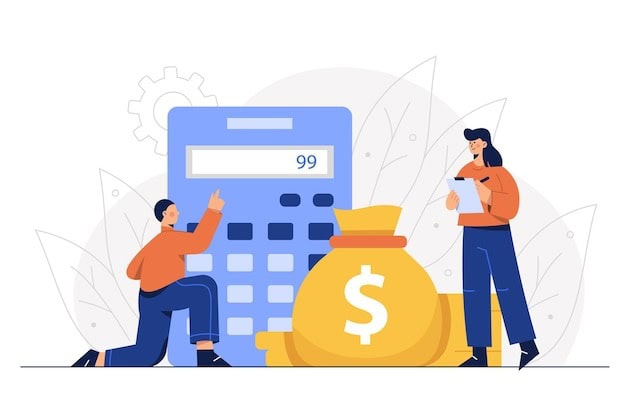
Even organic marketing takes time and resources.
Be realistic about what you can invest in ads, tools, and partnerships to maximize your efforts. For instance, if you are planning to produce a whiteboard video for your marketing campaign, make sure to realistically choose among the whiteboard animation companies based on your budget.
Step 8: Measure and Optimize
Marketing isn’t a set-it-and-forget-it game.
Track your performance, analyze results, and adjust as needed to keep improving.
How to Measure the Success of Your Marketing Strategy
Knowing your strategy is working is just as important as executing it.
Here’s how to track success:
Key Performance Indicators (KPIs)
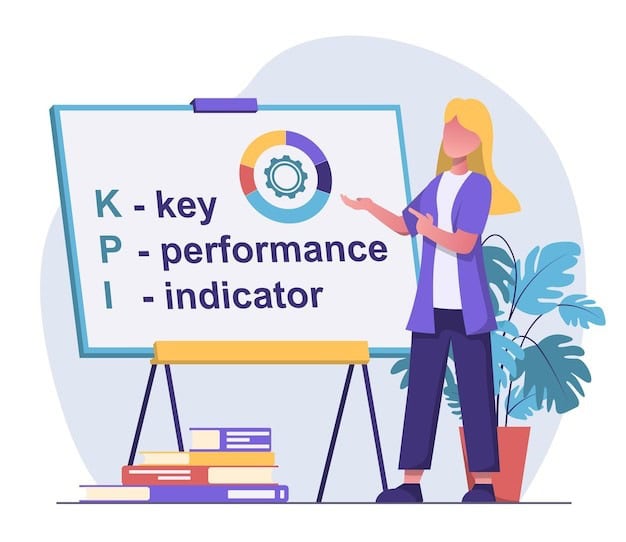
KPIs help you measure progress toward your goals. Some common ones:
- Website traffic & rankings (SEO)
- Engagement rates (social media)
- Conversion rates (leads & sales)
- Customer lifetime value (CLV)
Tools for Analytics
You don’t have to guess. Use data-driven tools to measure performance:
- Google Analytics – Website traffic & user behavior.
- Email Marketing Platforms – Open rates, CTR, conversions.
- Social Media Insights – Engagement, reach, follower growth.
FAQs About Marketing Strategies
What are the 4 types of marketing strategies?
While marketing strategies can take many forms, they generally fall into these four categories:
Product Strategy – Focused on positioning, branding, and the unique value of your Marketing strategies are often grouped into the 4 Ps of Marketing, but a more modern approach includes a 5th P:
Product – What you’re selling and how it meets customer needs.
Price – How you price it to stay competitive and profitable.
Place – Where and how customers can access your product (online, retail, direct sales).
Promotion – The marketing tactics used to attract and retain customers (ads, social media, content).
People – The customer experience, brand relationships, and team behind your business.
A strong strategy balances all five to build trust, increase visibility, and drive growth.
How do I know which marketing strategy is best for my business?
The best strategy depends on your goals, industry, and target audience. Ask yourself:
Where does my audience spend their time?
What problems can my brand solve for them?
What marketing efforts have worked (or failed) in the past?
Start small, test different approaches, and track performance to see what delivers real results.
Conclusion: Make Your Marketing Strategy Work for You
At the end of the day, marketing isn’t about doing everything—it’s about doing the right things well.
Whether you focus on content, social media, SEO, or email, the secret is consistency, value, and understanding your audience.
And if you want to work smarter, not harder? Tools like Undetectable AI’s SEO Writer and AI Chat can help you create high-quality, optimized content at scale—without spending hours crafting every word.
Now, time to put this into action. Which strategy are you focusing on first? 🚀
